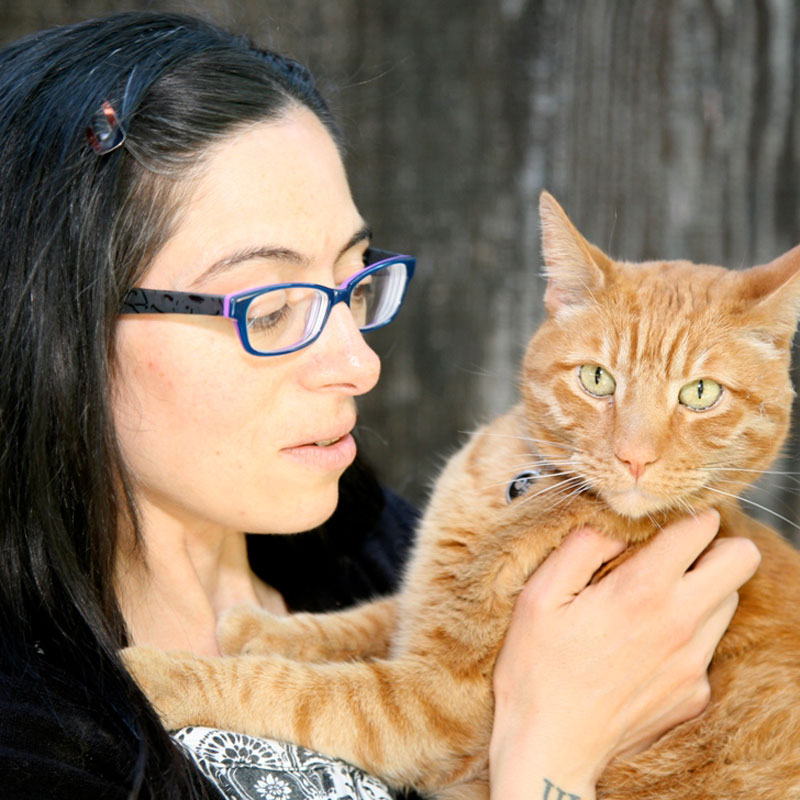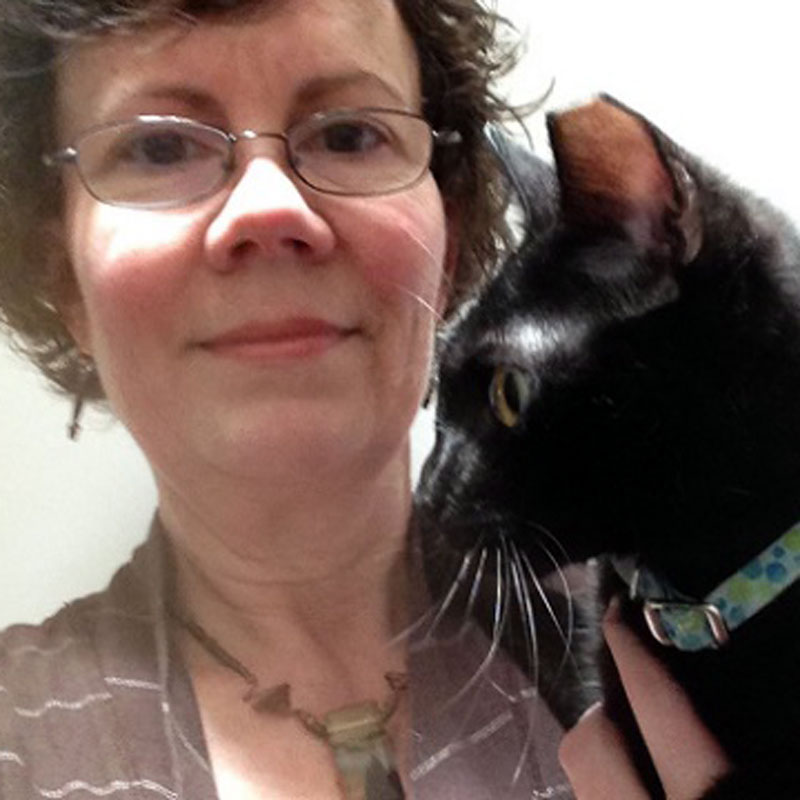
Interview! Dr. Mikel Maria Delgado, Cat Behaviorist
March 23, 2019
Interview! Danielle Bays, Director of Cat Protection and Policy, HSUS
March 30, 2019

This week, we have the next installment in our occasional series called Trapper Tips & Tricks, which profiles folks who are involved in trapping community cats.
This week we bring you tips from Charlotte Fox, Field Coordinator at Humane Rescue Alliance in Washington, DC.
Charlotte has been trapping cats since the early 1990s, and she was interviewed for this post by Erin Robinson, Humane Rescue Alliance’s Community Cat/CatNiPP Program Manager.
If you have tips and tricks you’d like to share or know of someone we should consider profiling, please email Stacy.
Why did you become a trapper?
Because there were just too many kittens outside! Also, when I moved into my house here in Washington, DC in the early 1990s, there were cats everywhere near me: friendly cats outside, feral cats outside, kittens born outside. I found a local group that connected me with a vet who offered semi-low cost spay/neuter (not free!) and would take potentially feral cats for surgery. I guess I never stopped looking for cats after that.
Tell us about your first trapping experience.
I started with the cats around my house, and I actually was hand capturing almost all of them at first! Mostly they were friendly adults or kittens, so I was unmarred. Once that population was under control, I ordered my own humane trap and began using traps (and stopped using my hands!).
Why do you support TNR?
It keeps feral cats from being automatically euthanized as the only option to address their needs and the community’s needs. It also keeps cats healthier, which members of the community respond to positively.
If you could give someone one piece of trapping advice what would it be?
Talk to everyone you see in the area where you’re trapping. Don’t be afraid to approach people about the cats: people walking their dogs are out frequently (and their dogs may alert them to the cats); people who have lived in the neighborhood for a long time; and even new residents all have valuable information about the cats outside.
This can add a lot of work on the front end before actually trapping, but it pays off. And you’re less likely to waste time looking for cats or setting out traps in the wrong location.
What is your favorite type of trap?
A Fat Cat trap. They are so beneficial for trap-savvy or injured cats, and they don’t require as much experience as a drop trap.
What is the most challenging part of doing TNR?
Finding the cats’ home base: where they are fed and/or where they take shelter. But talking to the residents is vital to help with this.
What is the most rewarding part?
Returning cats to caregivers who truly love their outdoor cats. They are so appreciative of the help and support we provide, and they don’t mind if the cats don’t like them much. They still provide everything they can for the cats.
Anything else you want to share with us?
Trapping is about pacing yourself, especially in the beginning when you first begin. Don’t try to trap every cat that you see!
Get others involved! Ask people to come and help. They don’t have to like cats as much as you do, but a lot of people are interested. You just may end up with new volunteers who will venture out on their own. I sometimes tell people it’s like fishing: waiting for that cat to go into a trap far enough to finally trigger it. This piece of advice has helped people understand what we do and to see it as a “game” or “sport,” not just something crazy cat people do for fun.
Until our next profile—happy trapping!




